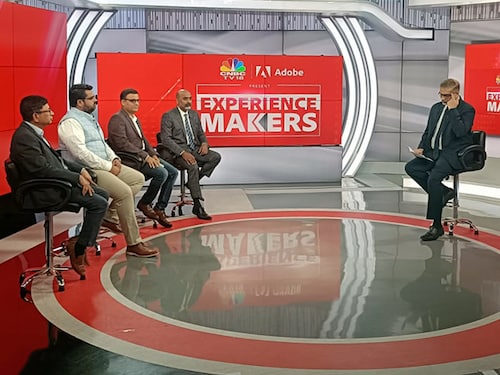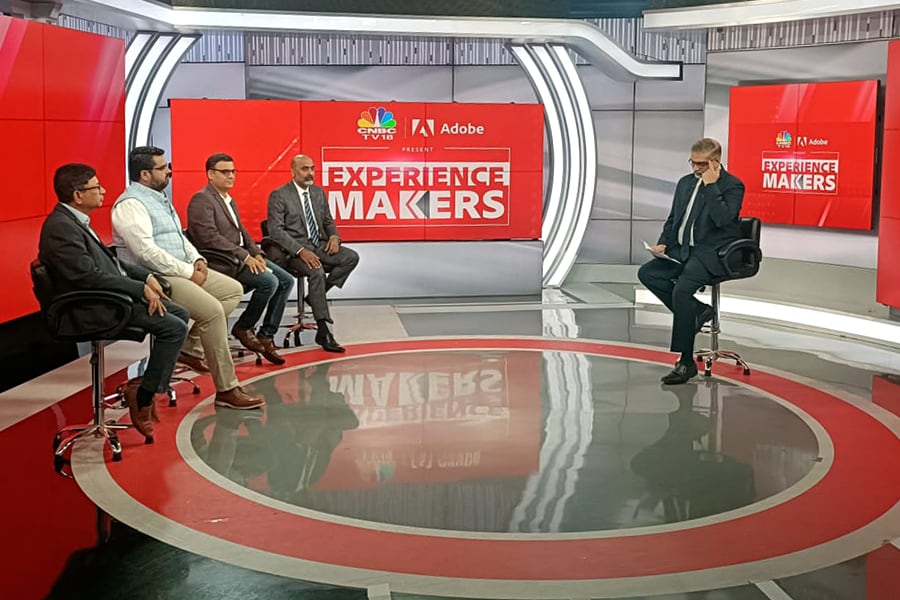Driving RoI through personalization and customer centricity: Insights from techn
The payoff for delivering great personalization and excellent experience delight is higher conversion


 To succeed in a competitive marketplace, businesses are becoming increasingly customer-centric. They seek to truly understand the ever-changing demands and expectations of customers, so that they can provide experiences that are authentic, engaging and meaningful. However, devising consumer experience (CX) programs require investment, which must continuously demonstrate value, if customer-centric initiatives are to be sustained over the long run.
To succeed in a competitive marketplace, businesses are becoming increasingly customer-centric. They seek to truly understand the ever-changing demands and expectations of customers, so that they can provide experiences that are authentic, engaging and meaningful. However, devising consumer experience (CX) programs require investment, which must continuously demonstrate value, if customer-centric initiatives are to be sustained over the long run.
The tech-wizards on the panel included Venu Juvvala ,Head of Digital Experience Business, Adobe India Gary Mathapati, Chief Information Officer, Butterfly Gandhimathi Appliances, Crompton Greaves Consumer Electricals Ltd Aniruddha Mehta, Chief Information Officer and Head of Information Technology, Prince Pipes and Fittings Ltd. and Praveen Shrikhande, Chief Digital and Information Officer , Aditya Birla Fashion and Retail Ltd.,
Gary Mathapati set the context for the discussions by enumerating the foundational building blocks, which are essential for any organization aiming to optimize CX. He affirmed that beyond understanding the consumer’s needs and preferences, an organization must also bake personalization and customization into the CX, by harnessing data and technology. Additionally, an enterprise must ensure proactive customer support, using technology tools, like AI and chatbots, so that its service is available 24X7 and consumers can interact with the business whenever they want. Lastly, organizations must offer their customers a seamless omni-channel experience for best CX.
He also pointed out common myths about CX and RoI, saying, “Improvements in CX do not deliver instant RoI it takes time. Secondly, the impact is not easily measurable. Thirdly, building CX is not a project with a definite time frame it’s a continuous process and you have to keep working at it by garnering and incorporating feedback. Further, CX does not necessarily result in cost reduction but it definitely helps to improve other parameters, like customer satisfaction and loyalty. Lastly, companies tend to underestimate the power of customer loyalty and retention."
The discussion shifted to how a company can track and measure the value of CX. Coming from a primarily B2C business, Praveen Shrikhande explained how his company tracked the value of CX, despite being a predominantly phygital enterprise with customer touch-points in stores and online too. “We are constantly tracking whether a customer’s experience in a store translates into a sale or not," he said. “We take feedback from our customers, post purchase, and we call back a month later to get feedback on their product experience, especially for our leading brands. This ensures that we are clued in to what our customers are feeling and that gives us the opportunity to change variables like our product mix, based on their feedback."
All along the customer journey – from awareness, consideration and purchase to experience and loyalty – CX works at different levels and calculating the RoI at these stages could be complex. Aniruddha Mehta explained, “Traditionally we used to calculate RoI by considering the cost, income and investment. But now, with evolution in the very definition of CX, the concept of RoI is also changing. Today, CX is not just the in-store or end-product experience it’s an end-to-end journey and takes into account the emotional or mental delight of the customer in addition to the physical benefits that the customer derives or experiences." He shared that this next-level of experience is enabled by using technology, harnessing data and fine-tuning cross-platform synergies.
Speaking from his experience, as an enabler of CX, Venu Juvvala emphasised the importance of customer-centricity in the age of personalization to deliver a truly compelling experience for all types of companies – digital natives and legacy brands. He recounted, “A recent study by Adobe revealed that 82% of consumers preferred to buy from brands that offer a more personal experience than others so, there’s no doubt that hyper personalization is very important." However, he explained that Adobe goes a step further to enable hyper-personalization at scale and tech plays an important role in it.
Adobe has been at the forefront of innovation in technology for CX. It has built an exceptional content supply chain platform that enables clients to create, curate, reuse and deliver content on a personalized basis to millions of clients, simultaneously. It also helps enterprises build technology that can take their clients, once they come on-board a digital asset, through a personalized journey that delivers a great experience and results in conversions. Most importantly, by marrying content with commerce, Adobe has crafted technology that delivers experience-led-commerce to enhance CX at the moment consumers are making their decision to buy the product or service. These and other initiatives by the Experience Maker enable businesses to strike the perfect balance between CX and RoI by using laser-focused targeted campaigns that convert customers more effectively.
The pages slugged ‘Brand Connect’ are equivalent to advertisements and are not written and produced by Forbes India journalists.
First Published: Jun 28, 2023, 15:47
Subscribe Now